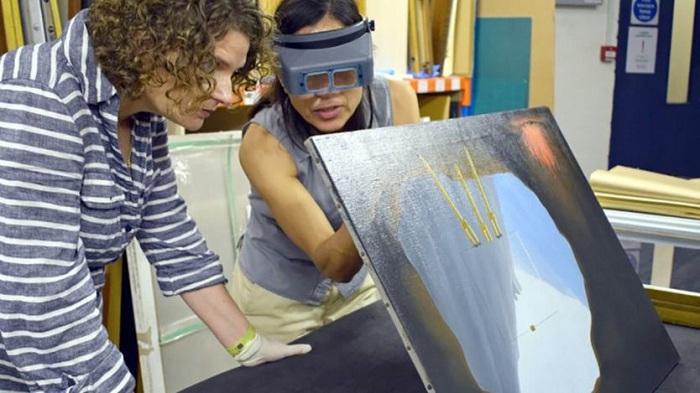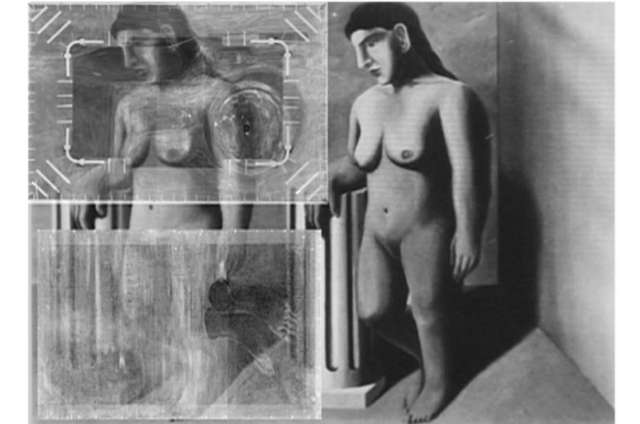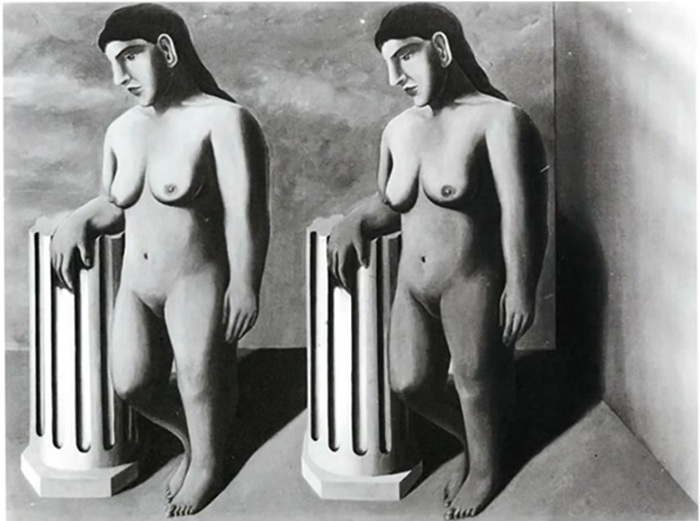The museum curator said it was "impossible" to uncover the image without destroying the later painting.
"Non-invasive" imaging methods will be used to recreate the hidden section.
The Enchanted Pose, which showed two almost identical female nudes side by side in a neoclassical style, was exhibited in 1927 but disappeared.
The only evidence of the painting`s existence is a single black and white photo.
It is believed the Belgian artist cut the painting into four to reuse the smaller canvases for an exhibition in 1936. One section is still missing.
The first quarter - a head and torso section - was hidden under The Portrait, hanging in New York`s Museum of Modern Art, while the second was discovered beneath The Red Model at the Moderna Museet in Stockholm. Both were found in 2013.
The third quarter was found under The Human Condition by conservator Alice Tavares da Silva, who works for the Hamilton Kerr Institute at the University of Cambridge.
She was studying the picture in Norwich before it was loaned to the Pompidou Centre in Paris in September for a major retrospective of 100 Magritte pieces.
The museum`s historic art curator Dr Giorgia Bottinelli said they would "never attempt" to physically uncover the original.
`Preserve intention`
"If it was technically possible it would certainly be unethical, as it was Magritte himself that decided to cut up one of his paintings and then create new compositions over the fragments," she said.
"The preservation of the artist`s intention is in my opinion our main priority.
"Non-invasive and non-destructive imaging techniques will enable us to make a reconstructed image of the hidden painting."
The Human Condition is now being transported to the Schirn in Frankfurt, where it will go on show until it returns to Norwich in June.
The hope is that publicity generated by the exhibitions will prompt the discovery of the final quarter.

Giorgia Bottinelli (left) with conservator Alice Tavares da Silva who discovered the hidden painting

An x-ray reconstruction shows where the original appeared on later Magritte works















































